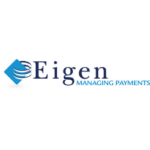 As hospitality businesses, we understand and recognise the role that loyal customers play in our commercial success, which is why (according to a recent study by Accenture) over 90% of companies actively invest in loyalty programmes. However, 2 in 3 customers say these programmes do not engender loyalty, leaving us with a dynamic modern-day puzzle to solve.
As hospitality businesses, we understand and recognise the role that loyal customers play in our commercial success, which is why (according to a recent study by Accenture) over 90% of companies actively invest in loyalty programmes. However, 2 in 3 customers say these programmes do not engender loyalty, leaving us with a dynamic modern-day puzzle to solve.
In recent times, the vast array of products and services available to consumers, tough economic conditions, and dwindling trust in big businesses have all contributed to the challenge of building customer loyalty. So, as customer loyalty becomes a more elusive target for businesses, what can be done from a customer service perspective to build relationships in an “age of disloyalty”?
Say what you mean, and do what you say
Consistency, predictability, reliability, transparency…we don’t always consider these traits when thinking about customer loyalty, but they are so integral in building trust in just about any type of relationship (friendship, romance, family, work etc.). If we say one thing and do another, or if our responses to similar situations are inconsistent, it creates doubt and dilutes trust…pushing the goal of achieving customer loyalty even further from reach.
Although it would be difficult to cover all “trust-building attributes” here, there are a number of ways to maintain consistency in customer service to help preserve the customer relationship. Implementing the correct measurement criteria, for instance, along with standardising workflows and processes would all contribute to regularly delivering the kind of service that your customers are promised, and subsequently, expect.
If, for example, a customer calls your contact centre and the query is resolved immediately during the call, the customer would be frustrated if it took a week to resolve a similar email-based request made to the same contact centre. Ultimately the specific contact channel used is irrelevant to the customer, but your approach to managing and measuring service levels on all your contact channels should be cohesive and consistent. This will ensure that your customers always receive the same great service safe in the knowledge that they can trust your business time and again.
“Great” expectations
To avoid disappointing customers, we have often been told to “under promise and over deliver”. While this is traditionally viewed as a safe approach, it doesn’t necessarily reflect the current needs and attitudes of the archetypal modern consumer. Customers are spoilt with choice, hard to impress, more demanding than ever, and expect constant feedback – all of which doesn’t bode well with the aforementioned mantra.
If, for example, the promise to the customer is to respond to a query “within 72 hours”, the bar really hasn’t been set very high (think of what else you could achieve in 72 hours!). Even if the response occurs after 36 hours, the customer will probably still be annoyed and not thrilled that you’ve “beaten” your conservative and painfully long-winded estimate.
An alternative approach to managing customer expectations relies on not just promising (and delivering) the high level and type of service customers expect but also delighting them with the unexpected. This could be in the form of providing more relevant and personalised service (particularly if this really shows your customers that you understand and value them as individuals), or simply by introducing business processes that genuinely make your customers’ lives easier.
Either way, you’ll get closer to meeting (or exceeding) expectations while still being an attractive and relevant proposition to customers. Without this, it is difficult to build trust and even think about attaining any related customer relationship goals.
Commit to 2019
Lastly (and on a more abstract note), if businesses are chasing customer loyalty, we also need to think about the type of commitment we’re expecting from our customers to achieve this goal.
When it comes to purchasing patterns and behaviours, discounts typically trump brand power, and switching for convenience is far more prevalent than sticking around because you’re “loyal” to any particular company or brand.
On a professional level, the days of working for the same employer for 15 years have long gone. On a personal level, social media has created an abundance of digital acquaintances who we broadcast our thoughts to regularly, yet these interactions often lack the significant interpersonal engagement required to develop meaningful, loyal and committed relationships.
Current trends also indicate that adults are getting married much later than previous generations (if at all). Courtship and the path to committing has become more protracted; not because people care about marriage less, but because they care about it more and want to get it right the first time.
So where does this leave us as businesses? We want loyal customers yet we expect a level of commitment that many customers find unfamiliar and are cautious of providing. Our digitally-enabled fast-paced lives have inadvertently prioritised immediate gratification over long term growth and development, yet when it comes to business, we still expect our customers to be in it for the long haul?
Loyalty may not be dead, but we need to think critically about whether the modern consumer has shifted the goal posts. Rather than setting marriage as a goal, we need to think about all the successful dates you need to go on before you get there. This is inherently why businesses simply need to do all that they can from customer service and CX perspective to make every possible customer interaction a glorious one.
Wynand Smit is CEO of INOVO, a leading business services provider.


















